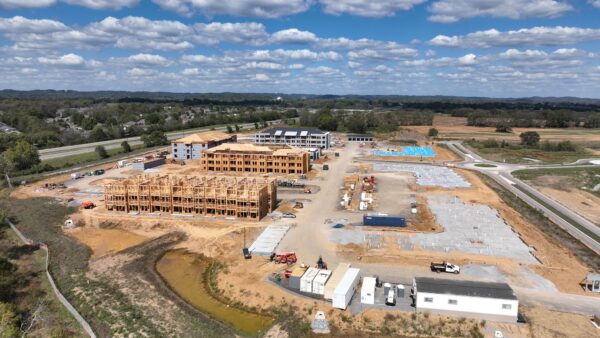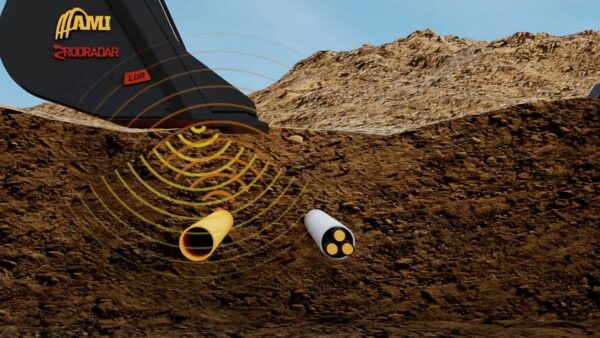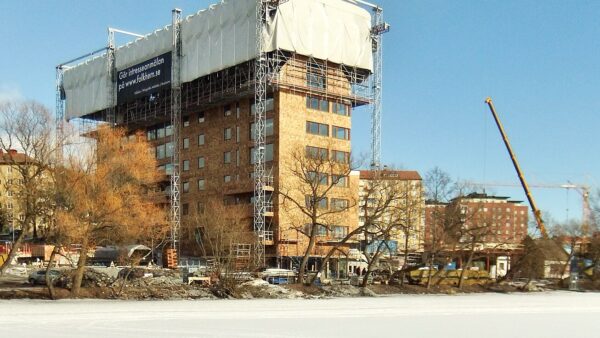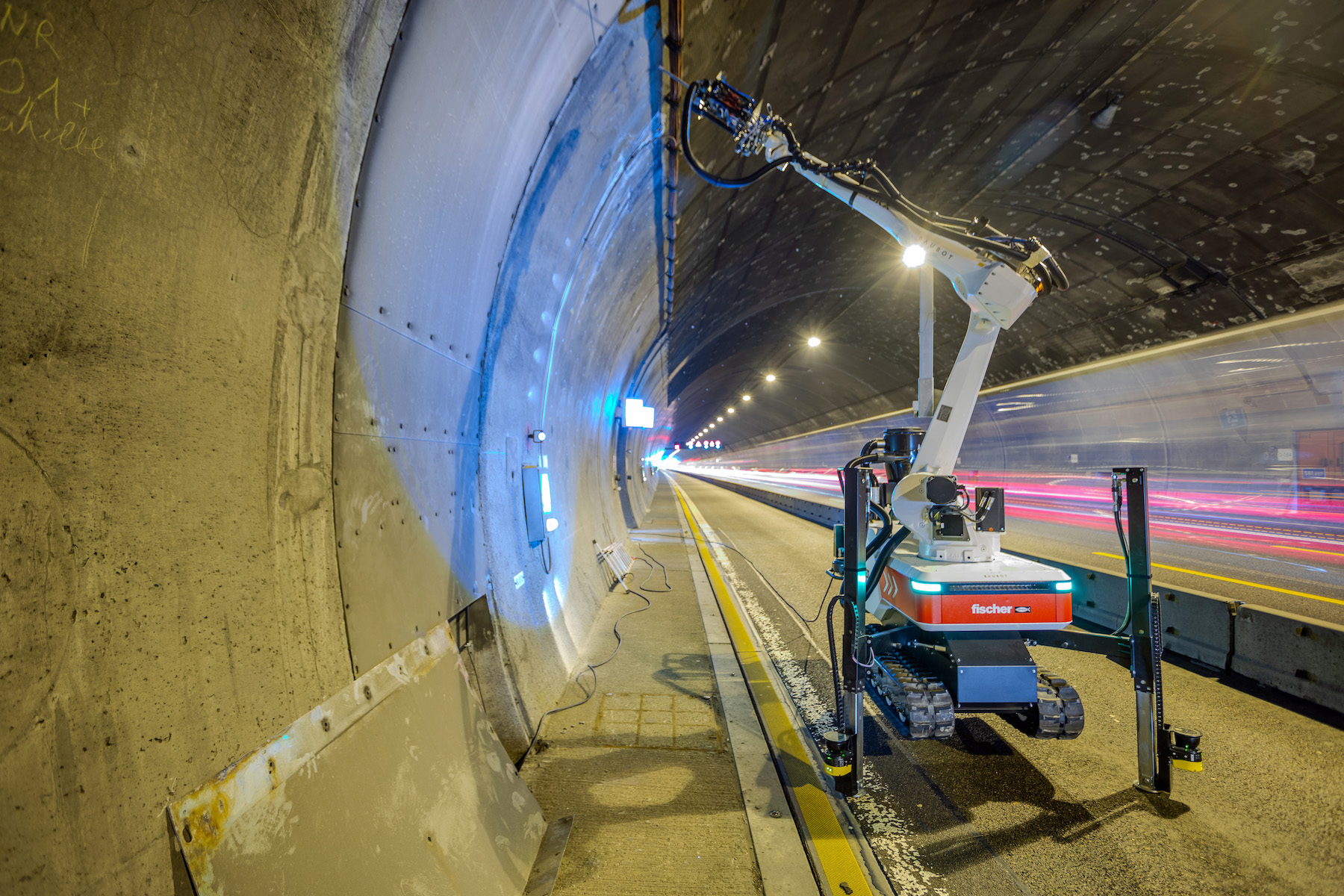
A Dutch robotics company founded last year has seen its concrete drilling robots put into active use on two major projects recently.
BauBot Services, a subsidiary of international fastenings specialist Fischer, has recently deployed its autonomous robots to drill nearly 9,000 holes in the concrete lining of the Engelberg Base Tunnel, a busy motorway tunnel in Baden-Wurttemberg, Germany that is being rehabilitated.
They also drilled nearly 5,000 holes in the ceiling of an apartment block going up in Utrecht, the Netherlands for a suspended ceiling.
The company says the system is fast, precise, and takes a difficult job that risks Hand-Arm Vibration Syndrome (HAVS) off workers.
Long and dangerous job
The BauBot system was used to drill holes to prepare for new steel reinforcement ahead of the installation of precast concrete elements.
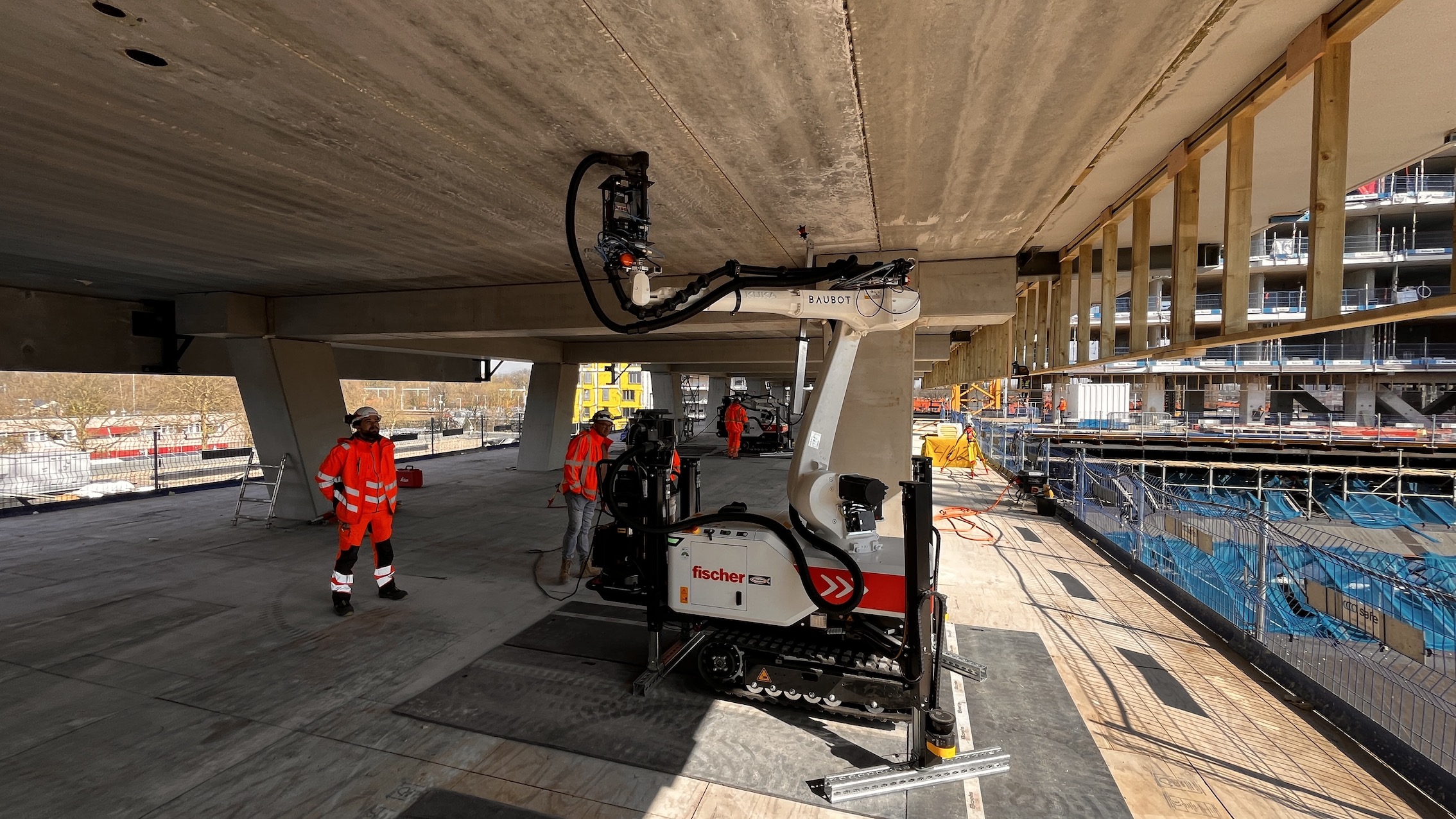
The robots drilled 8,960 holes over six months, each hole measuring 20mm in diameter and 220mm in depth, located at varying heights along the tunnel wall.
BauBot points out that humans can only drill for 90 minutes a day to mitigate against HAVS.
Working eight-hour shifts, the robots replaced a 5-person crew and cut the need for surveyors at every stage.
The system was able to drill 48 holes from a single position.
Extracts dust as it goes
In Utrecht, the system was deployed on a new apartment building in the under-development Cartesius urban district.
Here, two BauBot robots hammer-drilled 4,800 holes in the concrete for rods to hold up a suspended ceiling.
Each hole was exactly 6mm in diameter and 50mm deep.
The system extracts dust as it goes, and records data from each hole drilled, including depth and rebar hits.
The drilling took place 20m above ground on scaffolding.
“The BauBots’ movement was limited, and the structure had a complex geometry that required careful load distribution. Despite this, our BauBots performed excellently,” said Emil Kral, managing director of Fischer BauBot Services.
- Subscribe here to get stories about construction around the world in your inbox three times a week
More robot news:


